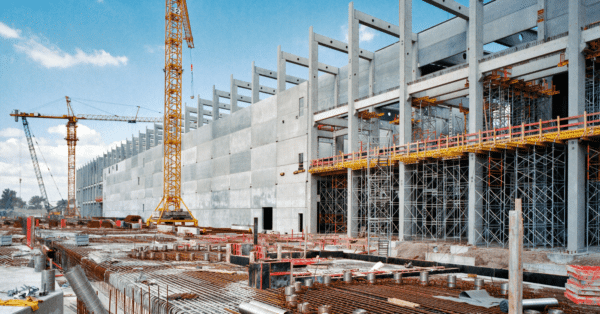Over the years, Xpera Group (now part of VERTEX) has been involved in a consulting capacity in numerous wildfires throughout California, with our most prominent engagement involving the 2007 fires in Southern California. Our role has typically been to determine property damages and cost to repair/ replace homes and other structures within these devastated regions.
For that reason, we have taken a particular interest in the dramatic wildfires last October in the Santa Rosa area of Sonoma County, known as the Tubbs Fire.
The City of Santa Rosa lies 50-plus miles north of San Francisco. With 175,000 residents, it is the largest city in California north of the San Francisco Bay Area.
The wildfire started on October 8 and burned some 37,000 acres. With winds of over 50 miles per hour fanning the fires, residents were told to immediately vacate their homes. On October 10, the entire city of Calistoga was told to evacuate. By October 20, the Tubbs Fire had become the most destructive wildfire in the history of California. Two dozen people died. More than 5,600 structures were destroyed.
Included among the structures destroyed were 4,658 homes in the Santa Rosa area, including the communities of Fountain Grove, Calistoga, Coffey Park and Larkfield.
Many of the homes were worth more than $1 million. Total damage is estimated at over $10 billion. The fire was not fully contained until March 31.
Fortunately, many of the residents had friends and relatives in the unburned areas to turn to for accommodations; others had second homes, often as far as Lake Tahoe (200 miles away). With vacancy rates effectively zero for apartments in the greater Sonoma/Marin County areas, these were not a viable option for relocation.
The Replacement Cost Problem
We reached out to our colleague Jim Ryan, a longtime developer in Sonoma County, to learn more about the state of the construction and real estate industries in the region and how they have been impacted by these recent events.
A major problem has risen from the ashes: How do you rebuild more than 4,000 homes in a geographic area that does not have hundreds of architects, general contractors and laborers sitting idle? How much will it cost?
Due to the magnitude of the destruction, the cost of replacement estimates in property loss evaluations will likely need to include an economic analysis aspect, because the fire has created major demand/supply shocks.
In terms of construction labor, the nine-county Bay Area, with a population of 7.7 million, has a very vibrant construction industry, which was already stretched thin prior to the fires. Like most of California, it is desperately short of skilled and unskilled labor.
With 50 miles between labor supply and the new demand in Santa Rosa, contractors would likely see the lengthy commute as untenable without major enhancements in budget. On-site workers would also need to commute long distances to job sites, as there are few, if any, residential facilities for them to inhabit in the immediate area.
In terms of architects, if only half of the homes burned were custom (and planned to be rebuilt as such), we are talking about hundreds of high-quality custom home architects that would need to sign on to do work remotely from their home bases, as the Santa Rosa area itself does not have a major supply of custom home architects.
The costs of reconstruction in Santa Rosa could be 50% higher than in the more urban areas of the Bay Area and the time to rebuild could be substantially lengthened. It could take a decade or more to rebuild the communities that were destroyed.
There is also a risk that claims adjusters, who are likely swamped, will fail to take into account these economic factors and estimate replacement costs that are far below what the market will realistically dictate.
The Value of Lost Homes
When some of the property loss claims end up in litigation, there will be questions related to value. In order for attorneys to best serve their clients, they will need a solid team of experts that will evaluate both the construction and economic factors at play.
How does one calculate the real economic damages of thousands of residents, even if ignoring the value of personal belongings and keepsakes? What is the lot value in communities where hundreds of lots are potentially available?
Many of the former homeowners are seniors (20% of the population of Santa Rosa is over age 60) and they may choose not to rebuild again. Further, if a multitude of lots do get resold and developers opt to build them as “spec” homes, can they be priced at levels that would attract large numbers of buyers, perhaps as second homes?
Computing replacement costs on a typical property loss case is generally not a difficult task. However, in this scenario, the real estate and construction markets are far from their norms. Most of the homes were vintage and their depreciated value is substantially less than their replacement cost. Will the insurance companies pay replacement costs? As many are custom homes, will the insurers be willing to retain high-quality architects and custom homebuilders to duplicate the fire losses?
Also, what can the owners expect to be reimbursed for during their months or years they are out of their homes, especially since many will opt not to rebuild their homes?
In summary, there are countless complex questions that can’t be addressed by straightforward cost estimation and appraisals. Having navigated this terrain many times, we have found there’s a need for a more holistic approach to these property loss cases, with a well-coordinated team of experts. Given California’s penchant for wildfires, we know the risk will always be there. However, our ability to prepare for and recover from devastating fires continues to improve with each challenge we face. For those of us who call the Golden State home, we will live to build—and rebuild—another day.
This article was originally published by Xpera Group which is now part of The Vertex Companies, LLC.







